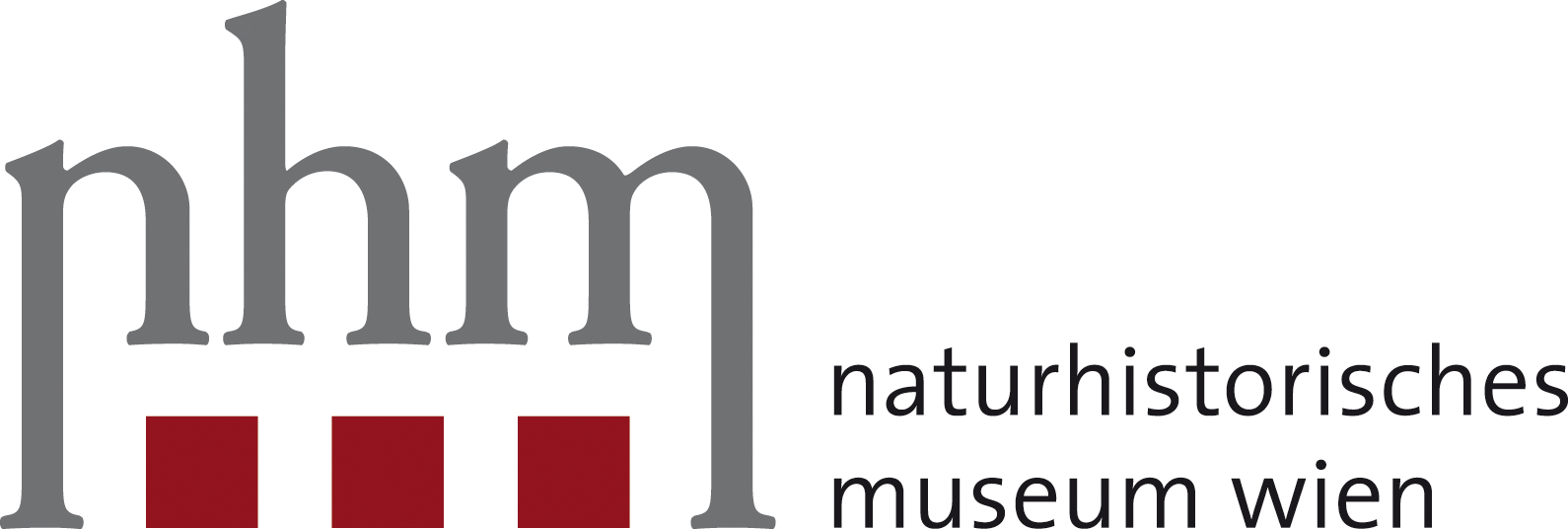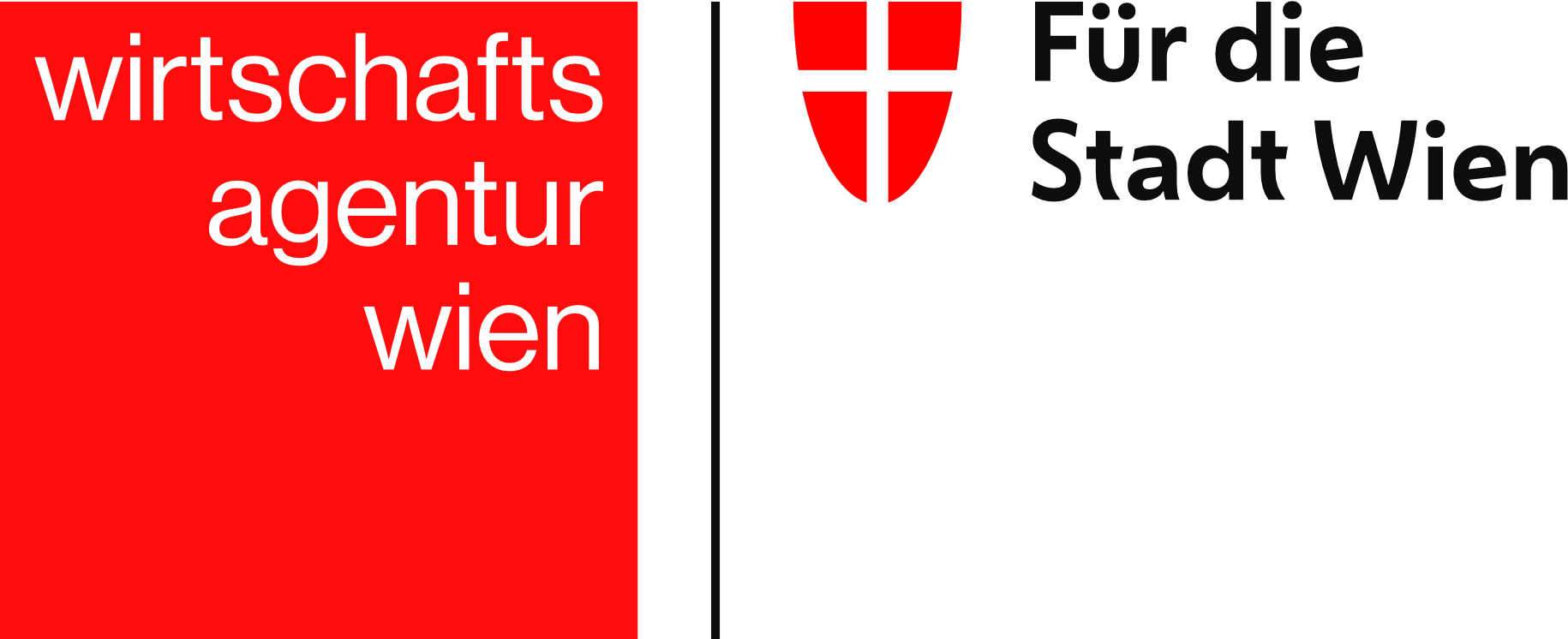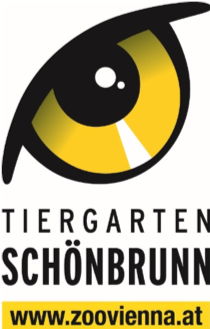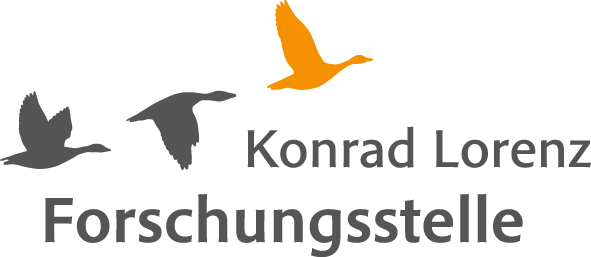Friends of the Garden
From alpine crested newt to sand lizard - gardening enthusiasts report please
Private gardens not only provide a place of peace and relaxation for humans but can also serve as important habitats and stepping stones for many animal and plant species. Especially the two endangered species groups of amphibians and reptiles can benefit from a garden designed with nature in mind. However, occurrences of common tree frogs, smooth newts, common lizards, and other species in residential areas are comparatively poorly documented. Reports from garden owners can fill knowledge gaps and contribute to the exploration of the herpetofauna. For this reason, the Austrian Society for Herpetology (ÖGH) annually invites people throughout Austria to participate in the campaign “Von Alpenkammmolch bis Zauneidechse – Gartenfreunde bitte melden“. Observations from one's own garden, school or community gardens are welcome. This year, the campaign will take place from May 8th to 14th, 2023. Observations can be submitted via the platforms naturbeobachtung.at, inaturalist.at, or herpetofauna.at. Incoming reports will be verified by experts, and the reporters will be contacted in case of misidentification. The collected data will then be transmitted to the herpetofaunistic database of the Herpetological Collection of the Natural History Museum in Vienna (HFDÖ) and thus will be available for research and nature conservation in the future.
What happened so far
In the past two years, over 200 occurrences of amphibians and reptiles were reported, with over 1000 individuals from 22 species. On average, two observations per garden were submitted. Although all states were represented, most of the reports came from Lower Austria. The most common reptile species were slow worm, common lizard, and grass snake, while the smooth newt was the most frequently observed amphibian species, followed by the common toad and the group of water frogs. A brief summary of the previous years can be found in the ÖGH-Aktuell issues 59 and 62.
This project fulfils version 1.1 of the quality criteria for citizen science projects on Österreich forscht.
ABOL-BioBlitzes
The lack of sustainability in human activity is leading to the global destabilisation of our natural systems. The resulting biodiversity and climate crises require a transformation to an environmentally sustainable society. However, the expertise in the field of taxonomy required for this transformation is often only shared by a few experts. This leads to a bottleneck in biological species knowledge, where, depending on the group of organisms, often only a few citizen scientists have the expertise to identify species. The ABOL-BioBlitzes have set themselves the goal of making these rare competences available to society.
Correct species identification of organisms is the basis for recording biodiversity and its changes. Traditional identification using morphological characteristics is very time-consuming and requires many years of experience and expertise; as a result, very many species can only be reliably identified by a small number of people. DNA barcoding is an innovative, resource-efficient form of species identification. DNA barcodes are standardised, species-specific DNA sequences from clearly identified individuals and thus serve as comparative references for DNA-based identification. The ABOL BioBlitzes help to populate the "digital identification book" (reference database) on the basis of DNA barcodes. This makes it possible to identify species even from tissue residues, larvae or environmental and mixed samples, such as a water sample from a pond. DNA barcoding helps to better fulfil the increased monitoring requirements (e.g. insect mortality, climate change). Scientists around the world are working on filling the reference database. The ABOL initiative (Austrian Barcode of Life) coordinates the creation of DNA barcode references for animals, plants and fungi that occur in Austria and ensures that this data is made available to the general public. ABOL works together with many national research institutions and private experts and is also networked with European and international initiatives.
With the ABOL-BioBlitzes everyone has the opportunity to help building up this reference database! The ABOL BioBlitzes are (usually) linked to annual "Biodiversity Days", which are organised by national parks, biosphere reserves or associations and take place in various regions of Austria. Biodiversity experts and scientists meet at these events to record biodiversity in a defined area within 24 hours. As part of the ABOL BioBlitz, species are not only documented, but also genetically analysed, i.e. DNA barcodes are created. Tissue samples of organisms that have been collected and identified by experts are handed over to the ABOL team, which initiates the creation of the DNA barcode. The corresponding data is then published in the international open database "Barcode of Life Data System" (BOLD).
The ABOL BioBlitz not only fills the reference database as a basis for future monitoring, but also secures the knowledge acquired by private and institutional experts in the long term. The results of the ABOL BioBlitz are published in a scientific journal approximately every two years, with all participants being able to contribute.
What happened so far
The first ABOL BioBlitz took place in 2019 at the GEO-Tag der Natur in the Biosphere Reserve Nockberge. Since then, 4-6 ABOL-BioBlitzes followed each year throughout Austria. A summary of the results was published in the journal Acta ZooBot with the collaboration of many ABOL BioBlitz participants. Forty experts collected 2,172 individuals or 1,040 species. DNA barcodes of most individuals could be generated and are available to national and international researchers and nature conservation experts in the barcoding reference database BOLD. The results of all previous ABOL BioBlitzes are summarized on the ABOL homepage, where reviews of each ABOL BioBlitz can also be found on the ABOL blog.
If you don't want to miss future ABOL BioBlitzes, you can also subscribe to the ABOL newsletter!
This project fulfils version 1.1 of the quality criteria for citizen science projects on Österreich forscht.
COwLEARNING
Breaking the blame game:
COwLEARNING for sustainable beef and dairy supply
Our society faces grand challenges, such as mitigating climate change and adapting to its consequences, ensuring a healthy diet and maintaining cultural landscapes with high biodiversity. A sustainable agri-food industry addresses these challenges.
In Austria, with its high share of meadows and pastures, cattle husbandry is particularly important. Several aspects of dairy and beef supply are perceived as unsustainable. This is for instance its impact on climate change because during their digestion cattle release the climate-damaging greenhouse gas methane. Moreover, both animals and humans often face welfare problems because of difficult living and working conditions on farms and abattoirs. Many animals are kept in small spaces for the production of cheap products in a competitive market. Cattle are then prone to illness and their treatment with antibiotics may result in antibiotic resistance. In addition, our high consumption of meat causes health risks.
These and other problems in our beef and dairy supply are broadly discussed but many questions remain unanswered:
- What has driven past changes in dairy and beef supply and why have sustainability innovations (not) been implemented?
- How do alternative dairy/beef chains compare in terms of animal and human welfare, the environment, socio-economic characteristics, and potential for growth?
- What are broadly acceptable and feasible changes for the future?
The project COwLEARNING combines scientific knowledge from the universities with the knowledge of practitioners in farming, processing, retail, gastronomy and consumption*. Together, we search for possible ways of change and thereby consider different innovative practices. This may include, for instance, pasture-based feeding, cow-calf contact systems (the calf stays with the cow for longer time after birth), mobile abattoirs, cow-sharing (animals are slaughtered only when all their parts are sold), milk and beef substitutes.
With a farm-to-fork assessment, we compare these innovations from the farmer to the consumer. Together with practitioners, we develop scenarios, this means pictures of the future showing alternative developments. In addition, we develop serious games to convey the topic in a playful way. With these approaches we want to stimulate learning and provide spaces to experiment with more sustainable beef and dairy supply.
*Participation is limited to these stakeholder groups and therefore closed.
Citizen Science Seminar
In January 2024, poject coordinator Marianne Penker held a lecture about the project (in German) as part of the lecture series "Citizen Science Seminar" at BOKU University.
Picture gallery
-
 Common Vision © Jana Wiese Common Vision © Jana Wiese
Common Vision © Jana Wiese Common Vision © Jana Wiese -
 Projectstart © FWF-LuizaPuiu Projectstart © FWF-LuizaPuiu
Projectstart © FWF-LuizaPuiu Projectstart © FWF-LuizaPuiu -
 Transdisciplinary Team © COwLEARNING Transdisciplinary Team © COwLEARNING
Transdisciplinary Team © COwLEARNING Transdisciplinary Team © COwLEARNING
https://www.citizen-science.at/en/component/k2/tag/animals?start=20#sigProIda65ba1cecd
This project fulfils version 1.1 of the quality criteria for citizen science projects on Österreich forscht.
Protecting Wildlife in Buildings in Vienna
A project of the Viennese environmental protection department
In spring (from early April), there's no doubt: the first swallows and swifts have returned from Africa to breed in Vienna. Other species, like house sparrow and jackdaw, have spent the winter with us and have already occupied their breeding places.
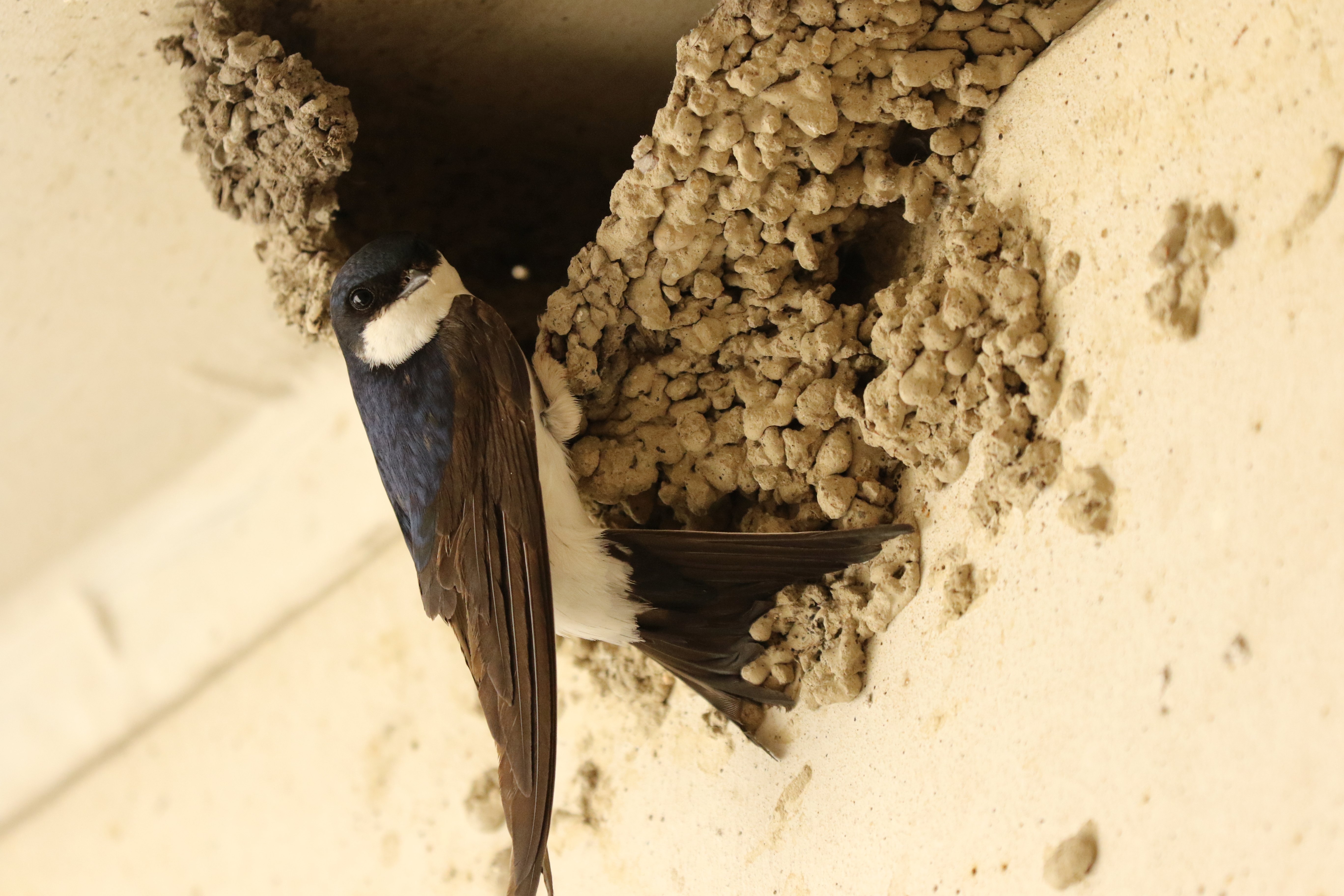
House Martin building a nest © Ferdinand Schmeller
All these species build their nests almost exclusively on houses, mostly under the cornice or hidden in niches and holes on the facade. Even though one might think, that there should not be a shortage of breeding places in Vienna, all these species are faced with a problem: Their hidden breeding sites, which are usually used repeatedly for many years, are often overlooked during renovations and other construction projects and are therefore lost. As a result, the populations of these protected bird species have been constantly declining recently.
With the help of citizens, the citizen science project “Protecting Wildlife in Buildings in Vienna” records the breeding sites of these bird species and makes this information available on the Internet, so the breeding places can be taken into account in renovations and construction projects. Only by protecting the breeding sites, the populations of these bird species, whose arrival in Vienna heralds the summer and fills the city streets with life, can be preserved in the long term.
.jpg)
House sparrow at the breeding site behind a street sign in the 5th district © Matthäus Greilhuber
If you also want to help these fascinating birds and want to share your observations with us, then visit us on the Internet at www.mauersegler.wien.at or www.gebaeudebrueter.wien.gv.at!
Retrospect:
Data on the breeding sites of the individual bird species in Vienna has been collected since 2014. In the year 2017, citizen scientists trained during excursions verified the first breeding sites.
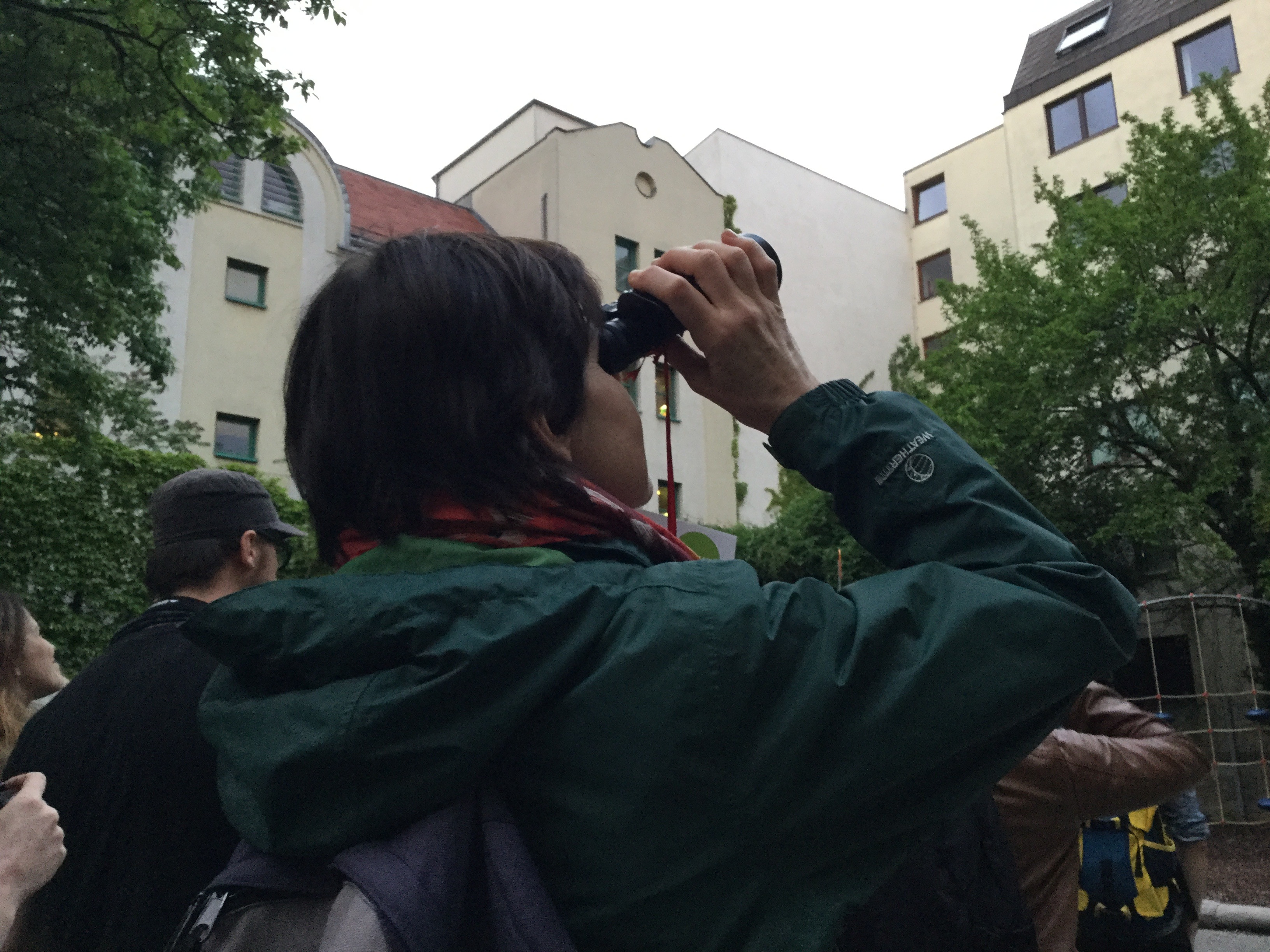
Enrolment excursion in 2017 © Ferdinand Schmeller
Since then, 3,000 breeding sites for common swifts alone have been successfully identified, as well as numerous breeding sites for house martins, house sparrows and jackdaws. This data is now accessible by the “Umweltgut”, the environmental city map of the city of Vienna. Of course, this data is already being used successfully to protect birds during renovations and construction work. Considering the breeding sites of kestrels, there is also intensive cooperation with the "Vienna Kestrel" project.
Procedure:
Anyone, who can identify the breeding sites of the several species, can take part. Breeding site can be reported using a form or via e-mail (This email address is being protected from spambots. You need JavaScript enabled to view it.). In addition, you can also take part in the active verification of the reported breeding sites – please let us know, if you wish to do so!
All data is treated confidentially, personal data will of course not be passed on.
Picture gallery:
-
 Swift leaving his nestbox Swift leaving his nestbox
Swift leaving his nestbox Swift leaving his nestbox -
 Jackdaw building a nest in a chimney Jackdaw building a nest in a chimney
Jackdaw building a nest in a chimney Jackdaw building a nest in a chimney -
 Swift fledgling at the breeding site Swift fledgling at the breeding site
Swift fledgling at the breeding site Swift fledgling at the breeding site -
 Swift in flight Swift in flight
Swift in flight Swift in flight
https://www.citizen-science.at/en/component/k2/tag/animals?start=20#sigProId164faf9101
Video:
This project fulfils version 1.1 of the quality criteria for citizen science projects on Österreich forscht.
City Nature Challenges in Austria
Every observation counts!
The City Nature Challenge (short: CNC) is an annual nature competition between regions that takes place in spring (usually at the end of April, beginning of May) and is held simultaneously in various cities and regions worldwide. On four consecutive days, people around the world document the diversity of wild animal, plant and fungi species in their region using photos and sound recordings and share them on iNaturalist. Together with others the observations are then identified to species level on iNaturalist.
The CNC was invented by the Natural History Museum of Los Angeles County and the California Academy of Sciences in 2016 and is organized by them since then annually. 2018 the CNC went globally, and hundreds of cities and regions are participating since then in this friendly challenge every year: Which region makes the most observations? Which region has the most species? Which region can motivate the most participants?
All observation of wild organisms in the participating regions count!
Since 2020, several Austrian cities and region are also participating in this international event. The CNC is organized by each of the participating cities or regions on their own. The “City Nature Challenges in Austria” project acts as an umbrella project for these participating cities and regions in Austria.
The aim of the CNC is to reacquaint people with their local biodiversity, to arouse curiosity and to discover nature on their doorstep. You can use the observation platform iNaturalist to exchange ideas with other nature lovers and learn and improve your knowledge of the species by identifying species together with others. This data helps research, administration, and nature conservation: it contributes to a better understanding of the status of species and their distribution in Austria. Due to the large number of observations, robust data on phenology can be obtained, area expansions of invasive species or of rare/sensitive species can be detected, and rediscoveries and new finds are also possible.
When?
The next City Nature Challenge takes place from April 25th to 28th 2025. Planning for the 2026 CNC event already starts in autumn 2025.
Participate
Everyone can participate in the City Nature Challenge by making observations or help identifying observations to species level! No registration to the project is necessary. All you need is a camera (smartphone or digicam) and a free iNaturalist account for uploading the photos. In Salzburg and Vorarlberg, Observation.org and the ObsIdentify app are used to collect data. The use of both platforms is free of charge.
Now, simply take photos of wild animal, plant or fungi species between April 25th and 28th 2025 in the participating regions and post them on iNaturalist. That is all it takes for your observation to count in the City Nature Challenge!
You can also help identify species on iNaturalist submitted during the CNC. Or simply tell your family, friends or colleagues that the CNC is happening in their region.
iNaturalist is a citizen science platform where everyone can post images or sound recordings of their species observations and identify it together with other users. It is run by the California Academy of Sciences and the National Geographic Society. Beside the documentation of biodiversity users can also get in exchange with each other over the platform.
In Austria, you can take part in the City Nature Challenge in 2025 in the following regions:
- Amstetten – Waidhofen/Ybbs
- Elsbeere Wienerwald
- Graz bis Vulkanland
- Industrieviertel
- Innsbruck
- Krems – Wachau – Melk
- Marchegg
- Mittelkärnten
- Nationalparkregion Gesäuse
- Neusiedler See/Seewinkel
- Salzburg (via observation.org)
- St. Pölten
- Vorarlberg (via observation.org)
- Wien
What’s with the data?
The observations reported to iNaturalist during the course of the CNC can be viewed and used by any user of the observation platform. So they are freely available. In addition, verified observations (which have the status of "research grade") are shared with GBIF "Global Biodiversity Information Facility" – an international biodiversity database – used by scientists worldwide for their research. In addition, the observations are also available in the Austrian Biodiversity Atlas with a slight delay.
Through your iNaturalist account, you can control how your observations and photos may be used (by providing a Creative Commons license) and you can also remove your observations at any time by deleting your account.
Podcast episode
In April 2023, coordinator of the region Krems-Wachau-Melk, Tanja Lumetsberger, presented futher insights and details about the City Nature Challenge in our podcast Wissen macht Leute. You can listen to the episode here (in German).
Further information
Further information on the City Nature Challenges in Austria and how you can be part of it can be found on our project website.
Information on the official international project can be found at www.citynaturechallenge.org (in English).
Implementing organisations
- Haus der Natur Salzburg
- Haus für Natur, Museum Niederösterreich
- inatura Vorarlberg
- Institut für Biologie, Universität Graz
- Nationalpark Gesäuse
- Nationalpark Neusiedler See – Seewinkel
- Naturhistorisches Museum Wien
- Naturwissenschaftlicher Verein für Kärnten
- Paris-Lodron Universität Salzburg
- Tiroler Landesmuseen
- Universalmuseum Joanneum
- Universität für Weiterbildung Krems
The City Nature Challenge is organized on a global scale by the Natural History Museum of Los Angeles County and the California Academy of Sciences.
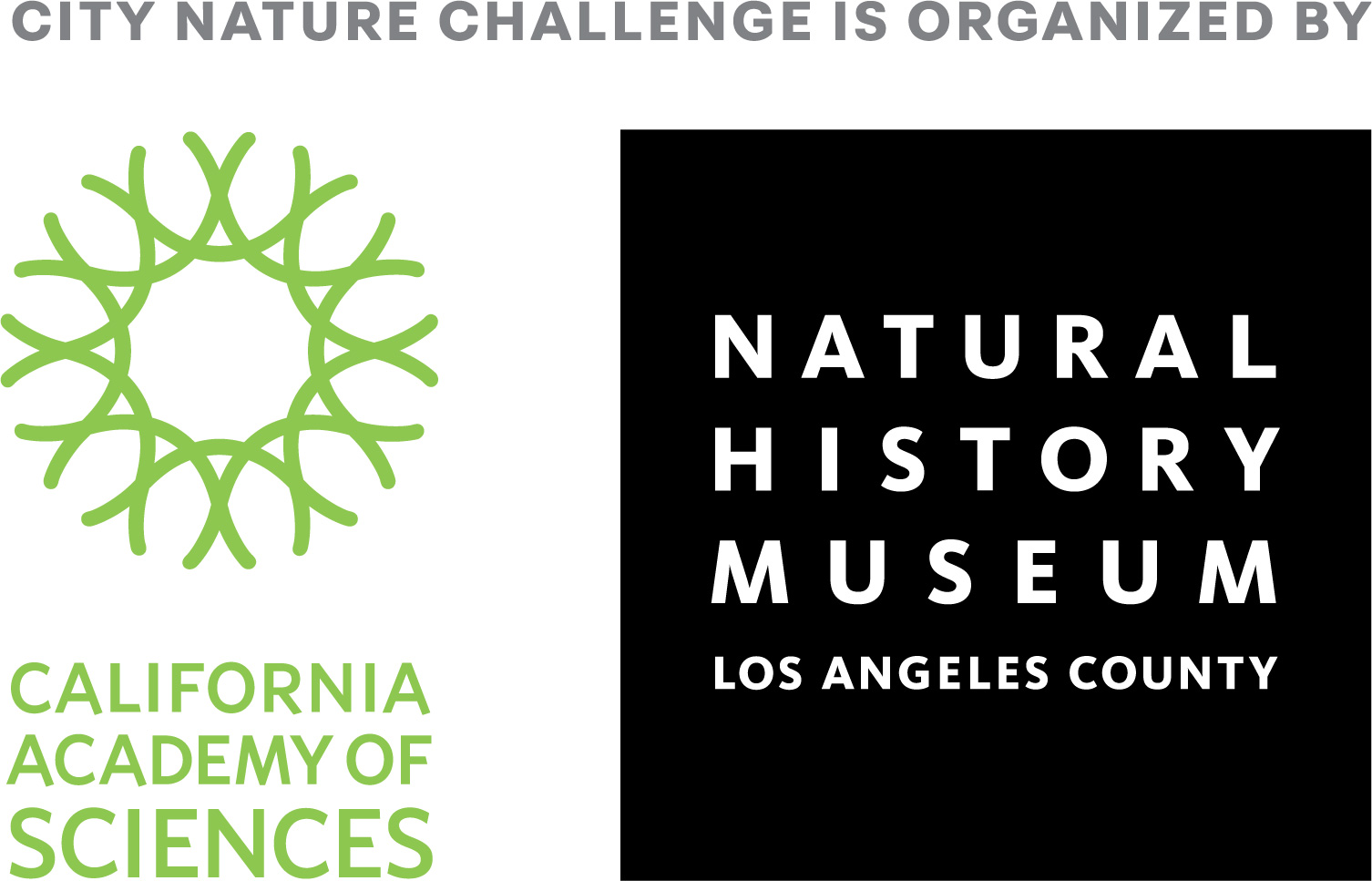
This project fulfils version 1.1 of the quality criteria for citizen science projects on Österreich forscht.
Mammoth wasp
The mammoth wasp Megascolia maculate is the largest wasp species in Europe with a body length of up to 4.5 cm. In Austria, a few specimens of the mediterranean species were found in Vienna and Lower Austria at the end of the 19th century. Since then, there have been sporadic sightings in eastern Austria in recent years. Due to the current climatic warming it can be assumed that the species will spread further in Austria in the next years. In order to observe and document this, we need your help.
As the species is still very rare in Austria and the flight time is very short, it is almost impossible to find it by active search, let alone to get an overview of the current occurrences in Austria. However, if many people keep their eyes open and observe the activity in their surroundings, success is certain, because the wasp is hard to miss!
The wasps hatch in our latitudes in June and can be observed until about mid-July. The adults feed on nectar and visit preferably blue and reddish-blue flowers from various families, such as the genus Allium, Eryngium or thistles, when foraging; they have also been observed on the common silk plant. The males, which usually hatch a week earlier, fly in search of females at a height of 50 to 150cm. The females mate fairly soon after their appearance and then search for a suitable host for oviposition: grubs of rhinoceros beetles, stag beetles, or walkers are accepted. The larvae of the mammoth wasp grow throughout the summer and then overwinter as a pupa in a cocoon, from which an adult wasp hatches again in the following early summer.
Observations are mostly made while nectar-feeding on flowers. In Austria, the species has so far been observed on the common milkweed, hollyhock, lavender and leek. Since the beginning of the citizen science project, the red-fronted dagger wasp has already been documented at 12 sites in northeastern Austria. The westernmost sites so far are Mistelbach and Strasshof an der March.
Recognition of the mammoth wasp
Besides its considerable size of up to 4.5cm body length, the most striking features of the mainly black and bristly-haired wasp are the yellow, orange-red or red colored head with large mandibles and the yellow spots on the abdomen. The posterior part of the abdomen is covered with reddish bristles.
Attention! There is a risk of confusion with another, smaller species, which is commonly found in our area: The hairy flower wasp (Scolia hirta) has yellow spots on the abdomen as well, but a black colored head!
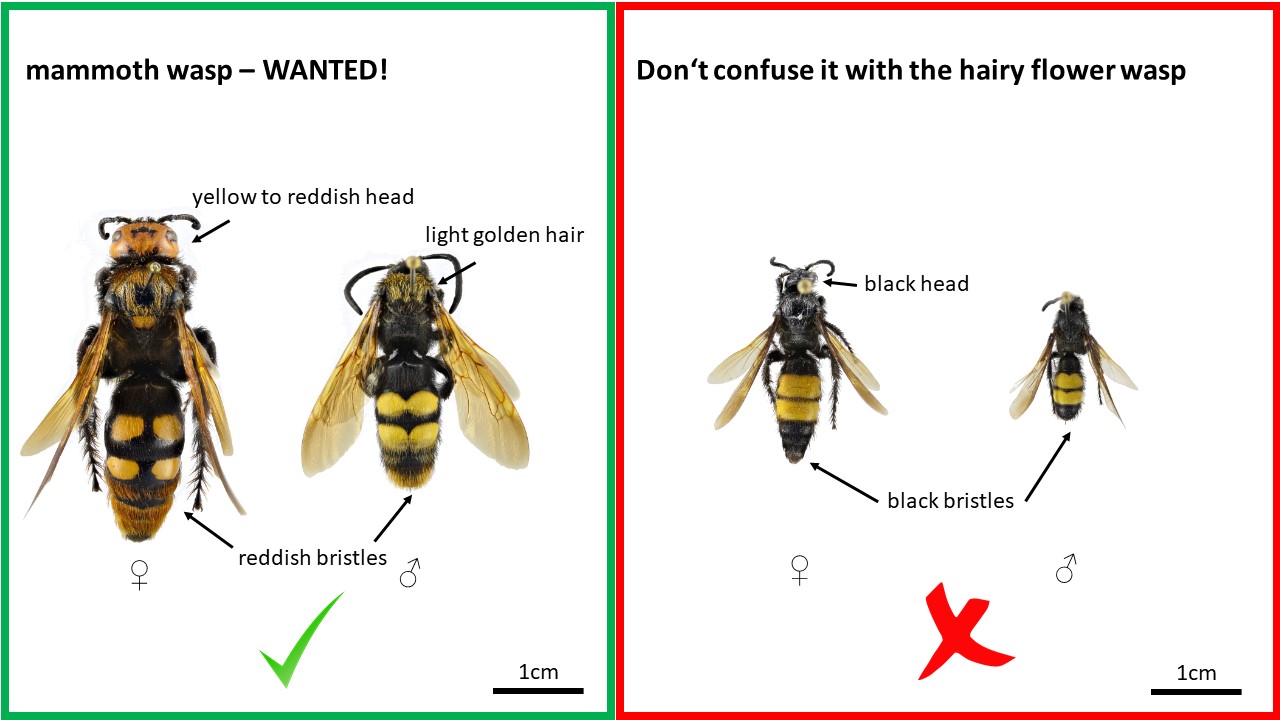
© Harald Schillhammer
Sighting reports
Sightings of the mammoth wasp with photo, date and exact location can be reported by email to This email address is being protected from spambots. You need JavaScript enabled to view it.. Furthermore, information on the plant species is also interesting if the wasp was observed visiting flowers.
The corresponding sighting data will be evaluated and published afterwards.
You will receive a confirmation or correction of your identification and if you wish, you will be mentioned by name in the article. The scientific publication will be sent to all who have contributed with their data.
Project goals
The aim of the project is to monitor the spread of the mammoth wasp Megascolia maculata in Austria using data submitted by Citizen Scientists. As in several other species, changes in the distribution are related to the climatic warming. If sufficient data are acquired, the diving factors in this process will also be scientifically analyzed.
In addition, the project aims to increase awareness of the native insect fauna and its dynamics. Observing and recognizing the largest wasp in Europe can also be an impressing experience.
Gallery
-
 Mammoth wasp in Austria © Franz Wieland Mammoth wasp in Austria © Franz Wieland
Mammoth wasp in Austria © Franz Wieland Mammoth wasp in Austria © Franz Wieland -
 Mammoth wasp on Common silk plant in Austria © Günter Gaß Mammoth wasp on Common silk plant in Austria © Günter Gaß
Mammoth wasp on Common silk plant in Austria © Günter Gaß Mammoth wasp on Common silk plant in Austria © Günter Gaß -
 Mammoth wasp on redcurrant in Austria © Gerhard Barisch Mammoth wasp on redcurrant in Austria © Gerhard Barisch
Mammoth wasp on redcurrant in Austria © Gerhard Barisch Mammoth wasp on redcurrant in Austria © Gerhard Barisch -
 Mammoth wasp in Austria © Gerhard Barisch Mammoth wasp in Austria © Gerhard Barisch
Mammoth wasp in Austria © Gerhard Barisch Mammoth wasp in Austria © Gerhard Barisch
https://www.citizen-science.at/en/component/k2/tag/animals?start=20#sigProId90fbf13b10
Project institution
This project fulfils version 1.1 of the quality criteria for citizen science projects on Österreich forscht.
Forest areas for the forest dormouse
Overview
You can tell by its name: The forest dormouse (Dryomys nitedula) is a characteristic species for deciduous and mixed forests. It belongs to the dormouse family and its survival is inextricably linked with forest habitats. The forest dormouse is protected throughout Europe, but data on its distribution is largely still missing. So where in Austria can it be found?
Have you ever seen a forest dormouse? With its black eye mask, it reminds us of a superhero in action, but in fact it spends a large part of the year in hibernation – a very typical behavior for a dormouse. Even during its activity period, it is a quite cryptic species that lives a hidden life between the branches of the trees. The forest dormouse is seldom seen, and it is not easy to prove its presence in an area. The forest dormouse is almost unknown even among foresters and regular forest guests.
Therefore, we are searching for the forest dormouse nationwide - beginning from the Danube floodplains, down to the mountains of the Alps. We want to find out more about this cryptic little climber and its habitat preferences and are counting on the help of numerous citizen scientists! There are many ways to take part in the “task force forest dormouse”. Become a citizen scientist and help us to find the forest dormouse!
Our project goals:
- Where does it live? – Improve the knowledge about the distribution of the forest dormouse in Austria.
- How can we preserve the habitats of the forest dormouse? – Develop a schedule of measures to protect the species.
What´s happening now:
- We installed 600 nesting boxes to monitor the forest dormouse populations.
- We use camera traps and footprint tunnels to detect our native dormice.
- We collect reports from citizen scientist.
- We provide information material and educational documents.
- We develop a protection concept and guidelines for forest managers.
- We share our knowledge at events.
Citizen Science Seminar
In 2022, poject coordinator Birgit Rotter held a lecture about "Forest areas for the forest dormouse" (in German) as part of the lecture series "Citizen Science Seminar" at the University of Natural Resources and Life Sciences Vienna (BOKU).
Image gallery
-
 Forest dormouse climbing in the branches (c) Lubomir Hlasek Forest dormouse climbing in the branches (c) Lubomir Hlasek
Forest dormouse climbing in the branches (c) Lubomir Hlasek Forest dormouse climbing in the branches (c) Lubomir Hlasek -
 Forest dormouse sitting on a branch (c) Lubomir Hlasek Forest dormouse sitting on a branch (c) Lubomir Hlasek
Forest dormouse sitting on a branch (c) Lubomir Hlasek Forest dormouse sitting on a branch (c) Lubomir Hlasek -
 Forest dormouse found in a nesting box (c) apodemus Forest dormouse found in a nesting box (c) apodemus
Forest dormouse found in a nesting box (c) apodemus Forest dormouse found in a nesting box (c) apodemus -
 Nesting box (c) Birgit Rotter Nesting box (c) Birgit Rotter
Nesting box (c) Birgit Rotter Nesting box (c) Birgit Rotter
https://www.citizen-science.at/en/component/k2/tag/animals?start=20#sigProId338a66d27d
This project fulfils version 1.1 of the quality criteria for citizen science projects on Österreich forscht.
Explorer Challenge
The Austrian start-up Livin Farms develops innovative technologies for the sustainable breeding of insects. Food and other organic residues can be recycled with the help of insects and converted back into valuable proteins. In this way, cycles can be closed and food systems can be made more sustainable.
Explorer Challenge
Education is another central aspect at Livin Farms. As part of the Explorer Challenge school project Livin Farms brings sustainability, circular economy and insects to schools. The project is for public secondary schools in Vienna and runs in cooperation with the Vienna Business Agency. Participation in the project is free.
School classes receive up to 3 Hive Explorer (mini mealworm farms) per school for up to one semester. Participating school classes develop their own research questions on insects and insect breeding and implement experiments to find answers. The results are documented and presented.
Through the participation of the students as Citizen Scientists, new research questions are developed. Thereby new knowledge and new insights are generated and research on the subject of insects as an alternative source of protein is supported.
Other schools are also invited to participate. To receive a Hive Explorer, these schools can check the website www.thehiveexplorer.com or send an to email This email address is being protected from spambots. You need JavaScript enabled to view it..
Picture Gallery
-
 Hive Explorer in Vienna Open Lab 2 (c) Vienna Open Lab Hive Explorer in Vienna Open Lab 2 (c) Vienna Open Lab
Hive Explorer in Vienna Open Lab 2 (c) Vienna Open Lab Hive Explorer in Vienna Open Lab 2 (c) Vienna Open Lab -
 Hive Explorer in Vienna Open Lab (c) Vienna Open Lab Hive Explorer in Vienna Open Lab (c) Vienna Open Lab
Hive Explorer in Vienna Open Lab (c) Vienna Open Lab Hive Explorer in Vienna Open Lab (c) Vienna Open Lab -
 Hive Explorer in the NMS Konstanziagasse 2 (c) livin farms Hive Explorer in the NMS Konstanziagasse 2 (c) livin farms
Hive Explorer in the NMS Konstanziagasse 2 (c) livin farms Hive Explorer in the NMS Konstanziagasse 2 (c) livin farms -
 Hive Explorer in the NMS Konstanziagasse (c) livin farms Hive Explorer in the NMS Konstanziagasse (c) livin farms
Hive Explorer in the NMS Konstanziagasse (c) livin farms Hive Explorer in the NMS Konstanziagasse (c) livin farms -
 Hive Explorer in the OMS Pfeilgasse (c) livin farms Hive Explorer in the OMS Pfeilgasse (c) livin farms
Hive Explorer in the OMS Pfeilgasse (c) livin farms Hive Explorer in the OMS Pfeilgasse (c) livin farms
https://www.citizen-science.at/en/component/k2/tag/animals?start=20#sigProIdd040d396ee
This project fulfilled version 1.1 of the quality criteria for citizen science projects on Österreich forscht.
Crows in the Zoo (KraMobil)
"Crows in the zoo" is a Citizen Science project of the Department for Behavioral and Cognitive Biology of the University of Vienna in cooperation with the Konrad Lorenz Research Center and the Zoo Vienna. The researchers aim to find out more about the species and subspecies of crows that use the zoo area. All visitors of the Zoo Vienna are welcome to join in and contribute collecting behavioural data by using an app developed for smartphones.
As typical cultural followers, corvids regularly profit from human settlements as places to stay and as a source of food. The birds often form flocks of varying sizes. Recent research results suggest that these groups are not completely anonymous aggregations of random composition, as several birds meet again and again. In the present study, participants are to investigate which species of crows are found in Zoo Vienna, where they prefer to be and what they do in different places.
Research goal
The aim is to record which species/subspecies of crows are present at Zoo Vienna and what behaviour they display. This will allow their group dynamics and the influence of ecological factors (e.g., availability of food or presence of zoo animals) to be investigated.
Question
What is the influence of socio-ecological factors such as the behaviour of zoo animals, the distribution and quality of food, and the enclosure size on the behaviour and group size of crows at Zoo Vienna?
Method/access
Using a free app ("KraMobil") for smartphones, interested zoo visitors can collect sightings of wild crows (hooded crow, raven crow, rook crow) at Zoo Vienna. In addition to information on species, group size and localization, data on behaviour such as feeding, plumage care, aggression or interactions with zoo animals can also be entered. Various help for species identification, interpretation of behaviours or general application instructions are provided to the users via the app. The project is expected to contribute evidence about crow behaviour in human environment.
Who can participate?
Everyone who owns a smartphone and downloads the app "KraMobil". The app is available in both languages, German and English, and can be downloaded free of charge for Android and IOS. It runs on the Citizen Science App System SPOTTERON. Just download the app and join in!
Observations can also be entered via computer or laptop: Web app.
The Konrad Lorenz Research Center on Social Media
Partners
This project fulfils version 1.1 of the quality criteria for citizen science projects on Österreich forscht.
PolliDiversity 2.0
Compared to PolliDiversity, PolliDiversity 2.0. is still about creating habitats for insects, but the tasks of the citizen scientists have changed somewhat due to usability. The project was offered for the first time at the Citizen Science Award in 2021. In 2022, the second round took place in a modified form. Due to career changes of the project participants, the project will not be offered in 2023, but further project runs are planned for the future.
The aim of PolliDiversity 2.0. is to get as many people as possible excited about biodiversity and pollinators in their environment. Through active participation in research, the intrinsic motivation to actively engage in biodiversity conservation can be promoted. The goal of the citizen scientists will be to document the phenological development of plant species and then observe which pollinators visit these areas and at what time.
What are the tasks of the participating citizen scientists?
The main task of the citizen scientists is to document how the different plant species in the ReNatura wildflower mixture Gumpensteiner BW3 develop phenologically. Another task will be to observe the pollinators that visit the flowering areas. The resulting data will on the one hand provide interesting insights into the plant species in the flowering mixture and on the other hand valuable contributions to research into the lifestyles of the pollinators.
Documentation of phenological development
For the documentation of the phenological development of the flowering areas, a template is handed out to the citizen scientists to be completed for the documentation. The time of sowing, budding, flowering and plant growth should be documented. Different parameters such as outdoor temperature, weather and altitude are also included.
Observation of pollinators and data collection
When observing pollinators, the focus should be on wild bees in particular. Participants will also be given a simple identification key to assist them. Data collection is done via the platform of the Austrian Nature Conservation Union www.naturbeobachtung.at. There is a separate comment function where the project "PolliDiversity 2.0" is to be indicated.
Planting the flowering area
Citizen scientists receive seeds of the ReNatura wildflower mixture Gumpensteiner BW3 for an area of approx. 5 m². The seeds can be sown in your own garden or optionally in pots, which is why it is also possible to participate without having your own garden. The following plant species are sown:
Yarrow (Achillea millefolium), Field chamomile (Anthemis arvensis), Dyer's chamomile (Anthemis tinctoria), Kidney vetch (Anthyllis vulneraria), common marigold (Calendula officinalis), Caraway (Carum carvi), Cornflower (Centaurea cyanus), Brown Knapweed (Centaurea jacea), Centaurea pseudophrygia, Scabiosa (Centaurea scabiosa), Common Chicory (Cichorium intybus), Meadow Buttercup (Crepis biennis), Wild Carrot (Daucus carota), Carthusian Carinthia (Dianthus carthusianorum), Viper's Head (Echium vulgare), Widow's-flower (Knautia arvensis), Dandelion (Leontodon hispidus), Marguerite (Leucanthemum vulgare), Kidney Clover (Lotus corniculatus), Chamomile (Matricaria chamomilla), Yellow Clover (Medicago lupulina), White Sweetclover (Melilotus albus), Sweet Yellow Clover (Melilotus officinalis), Evening Primrose (Oenothera biennis), Sainfoin (Onobrychis viciifolia), Corn Poppy (Papaver rhoeas), meadow sage (Salvia pratensis), red campion (Silene dioica), common glue (Silene vulgaris), hare clover (Trifolium arvense), field clover (Trifolium campestre), small clover (Trifolium dubium), red clover (Trifolium pratense), black mullein (Verbascum nigrum), Sticky Catchfly (Silene viscaria) - all certified according to G-Zert®.
In the best case, the flowering area should be established as early as March (as soon as the first early flowering plants become visible), but by the end of April at the latest.
Which materials will be made available to the participating citizen scientists?
In order to enable citizen scientists to identify and participate in the project, the following information materials will be prepared and made available in digital form:
- Info workshop on Zoom
- Digital materials for participants: Experiment instructions, information materials on pollinators and identification keys for the selected pollinators.
- Template for the documentation of phenological development
The project materials are only available in German.
Further details on the project
The task of the citizen scientists is to document how the flowering areas develop: When do the seeds emerge? What is the temperature? What was the weather like in the past weeks? How tall are the plants after another two weeks? When do the first plants start to flower? If no plants come up, what could be the reason - have birds or snails been seen?
Furthermore, the citizen scientists should determine on several days from May to the end of July (depending on the flowering time of the plants) which plant species is preferred as a food source by certain wild bee species and other pollinators. Monitoring should be carried out on as many days as possible at three different times of day during daylight hours. The weather also plays a role, as wild bees are more likely to be seen in sunny weather but less likely to be seen in rain or strong winds.
How will the data of the participating citizen scientists be handled?
The data will be treated strictly confidentially and in accordance with the EU General Data Protection Regulation.
How can interested parties register?
Interested parties are welcome to register by e-mail. Please send registrations and queries to: This email address is being protected from spambots. You need JavaScript enabled to view it.
Citizen Science Seminar
In 2021, poject coordinator Verena Mayer held a lecture about "PolliDiversity" as part of the lecture series "Citizen Science Seminar" at the University of Natural Resources and Life Sciences Vienna (BOKU): "'PolliDiversity' - pollinator diversity in your own environment" (in German).
Project coordination:
Mag. Verena Mayer
Dipl. Ing. Renate Mayer
Other contributors:
Dr. Wilhelm Graiss
This project fulfilled version 1.1 of the quality criteria for citizen science projects on Österreich forscht.


